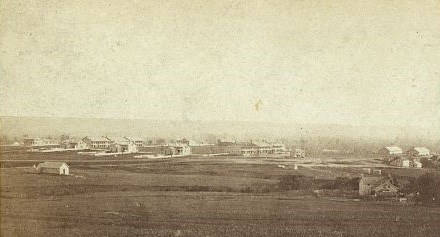

August 27th, 1867 In July of 1867, after expeditions in Kansas and Nebraska, Custer and his 7th Cavalry arrived at Fort Wallace in western Kansas. Custer had arrived at the fort after discovering what was left of a small cavalry group under Lieutenant Kidder. Custer was at the fort because of orders from his superior, General Winfield Hancock. However, with Hancock’s absence, Custer decided to travel to Fort Harker nearly 200 miles away - on various pretenses. Custer’s real priority was to be with his wife Libby who was at Fort Harker or Fort Riley. Many officers in his regiment already suspected Custer’s real intent. On July 15th he set out from Fort Wallace to Fort Harker with 76 soldiers of the 7th Cavalry. After several brushes with Dog Soldiers on their journey, the column made it to Fort Harker in the late evening of July 19th. Custer awakened the commanding officer present, Colonel A.J. Smith. Smith was startled to see Custer present (expecting him to be at his post at Fort Wallace). Custer then told Smith he was on his way to Fort Riley, several hours riding distance to the east. |
Last updated: June 18, 2018
